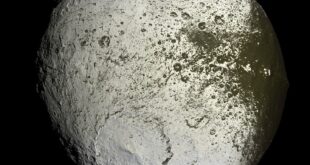30 Mind-Blowing Facts About Satellites
Satellites are amazing technological creations that orbit the earth while relaying data and images, and communicating with various devices across the world. These fascinating objects serve critical roles in data gathering, weather forecasting, and navigation, among other functions. Here are 30 mind-blowing facts about satellites.
Types of Satellites:
- Satellites come in five types: scientific research, Earth observation, military surveillance, communications and navigation.
- The first satellite, launched on October 4, 1957, was the Soviet Union’s Sputnik 1, which transmitted a “beep beep” signal for three weeks after orbit insertion.
- GPS satellites are flown in lots of 24 composite sun synchronous orbit inclining about 55 degrees.
Speed and Altitude:
- Satellites orbit the earth at different altitudes; however, most satellites are found in low earth orbit, where they typically move at a speed of 17,000 miles an hour.
- The International Space Station orbits 248 miles above the earth’s surface and travels at a speed of 17,500 miles per hour or 28,000 km/h.
- The geostationary orbit is positioned 22,236 miles or roughly 36,000 kilometers above the earth’s equator, while most telecom satellites orbit at this altitude.
Functionality and Power:
- The International Space Station operates on solar power via arrays about the size of a football field.
- The maximum lifespan of a typical satellite is around 15 years. However, some geostationary orbit satellites operated by telecommunications operators remain up to 30 years in space.
- Fact remain unchanged that the US satellite supplies the US military with essentially real-time photography upon request.
History of Satellite:
- Pioneering rocketry pioneers Robert Goddard and Konstantin Tsiolkovsky initially came up with the idea of satellite technology back in the start of the 20th century.
- In the late 1800s, Irish novelist Jules Verne suggested launching satellites to gauge the fate of lost international ships all over the world.
- Spying was one of the primary motivating reasons behind the initial deployment of satellites during the Cold War era.
Data Collection and Transfer:
- Satellite’s weather sensors revolve around discovering ideas about air temperatures, wind patterns, groundwater levels, and more.
- A GPS broadcasting with a power of a Laptop Switch used within space stations lead to open up highly accurate and synchronous distance calculation.
- Satellites have played a vital role in deciphering mysteries of climate change by analyzing data from glaciers, oceans current regime, polar regions, carbon cycles, vegetation color, etc.
Other Unusual Facts About Satellites:
- Artificial satellites can predict natural hazards based on some deductions collected from imaging, such as recent melts from blizzards over Andes mountains, wild-fires over vast forestrys from amazon.
- Mausoleums residing in, SpaceX landed its first reusable boosters or breaking the so-called engineering barrier.
- In 2019, India derailed into enormous debates with regard to launching 27 direct-to-home SES satellite via lightning strike and and debris traffic generated, devoid of losing any satellite from other crews in the same orbit.
In conclusion, satellites have a captivating history, and there are many fascinating ways these fantastic technological creations work in space. Their ability to collect, store, and transfer data, often essential data for consumer, scientific, and military purposes, is second to one. The dependence that our modern-day connected society has on these sensational silvered-speed travelers often leads us for interaction and potential devastating events (JWST and Orion satellite — although recently developed).
 Mind Uncharted Explore. Discover. Learn.
Mind Uncharted Explore. Discover. Learn.



